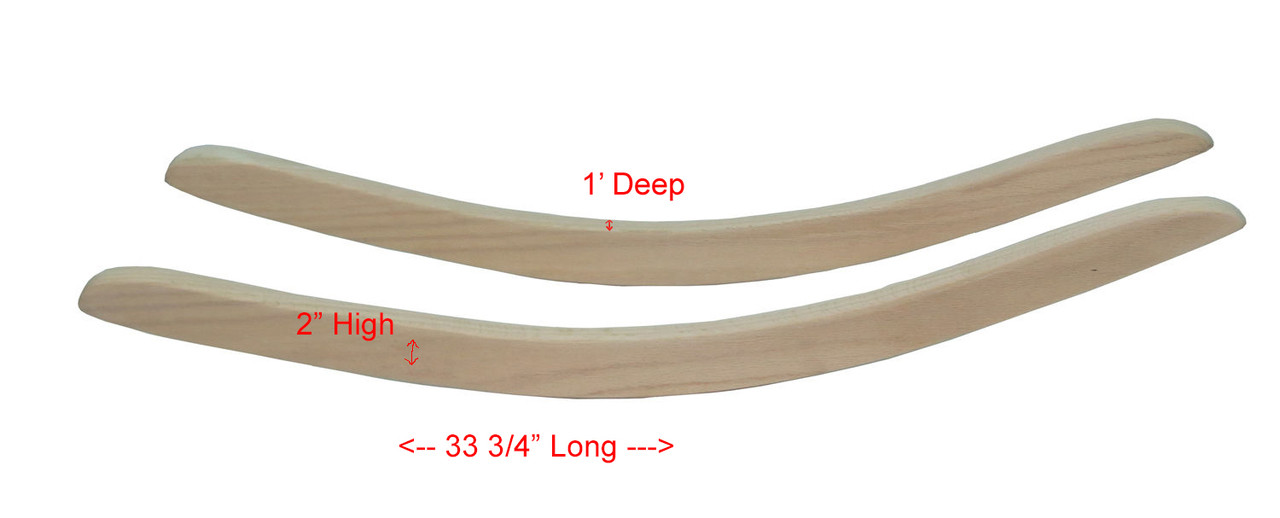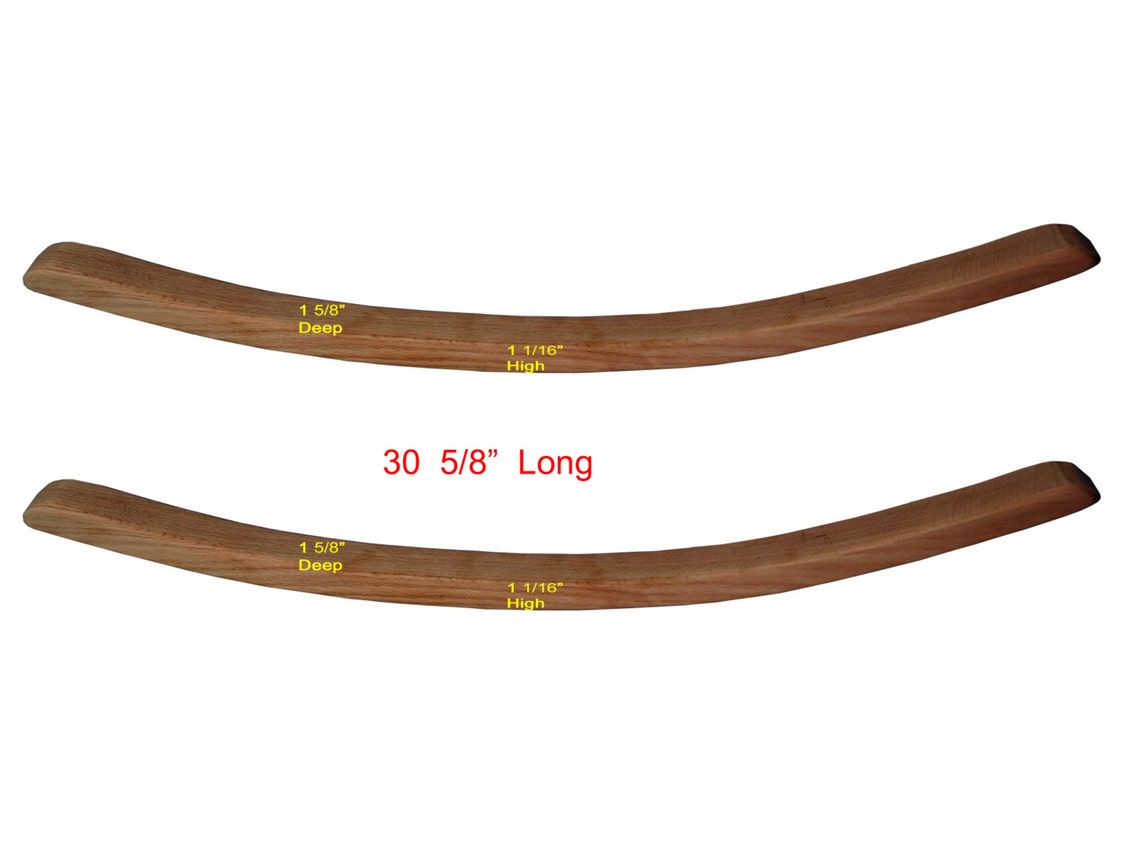DIY Rocking Chair Runners

Rocking chair runners are essential for smooth and quiet rocking motion, and they can be easily created at home with a variety of materials and techniques. This guide will explore the materials, construction techniques, and step-by-step instructions for building your own rocking chair runners.
Materials for Rocking Chair Runners
The choice of materials for rocking chair runners depends on your preferences, budget, and the style of your chair. Here are some common options:
- Wood: Hardwood like oak, maple, or cherry is durable and aesthetically pleasing. Softwoods like pine or cedar can be used for less demanding applications.
- Metal: Steel or aluminum can provide strength and longevity. These materials can be shaped and welded for custom designs.
- Plastic: High-density polyethylene (HDPE) or other durable plastics can be used for budget-friendly runners, especially for outdoor applications.
Construction Techniques for Rocking Chair Runners
Different construction techniques are employed depending on the chosen materials:
- Woodworking Joints: For wooden runners, common joints include mortise and tenon, dovetail, or butt joints. These joints provide strength and stability.
- Metal Fabrication: Metal runners can be fabricated using welding, bending, and cutting techniques. This allows for complex shapes and designs.
- Assembly Processes: Runners are typically assembled using screws, bolts, or adhesives, depending on the materials and construction methods.
Step-by-Step Guide for Building Wooden Rocking Chair Runners
This guide assumes basic woodworking skills and tools:
- Measure and Cut: Measure the width and length of the rocking chair’s base and cut two pieces of hardwood to these dimensions. The thickness of the wood will depend on the desired runner size.
- Shape the Runners: Using a jigsaw or band saw, shape the ends of the runners to match the curve of the rocking chair’s base. This ensures a smooth and consistent rocking motion.
- Create the Joints: For added strength, consider using mortise and tenon joints at the ends of the runners. This involves cutting a recess (mortise) in one piece and a corresponding projection (tenon) in the other.
- Assembly: Glue and clamp the two runners together, ensuring the joints are properly aligned. Allow the glue to dry completely.
- Sand and Finish: Sand the runners smooth, removing any rough edges or imperfections. Apply a wood finish, such as stain or varnish, to protect the wood and enhance its appearance.
- Installation: Attach the runners to the rocking chair’s base using screws or bolts. Ensure the runners are securely fastened and properly aligned.
Tips for Smooth Rocking Motion and Noise Reduction
- Smooth Surfaces: Ensure the surfaces of the runners are smooth and free of any imperfections that could cause friction or noise.
- Proper Alignment: Align the runners with the rocking chair’s base to ensure a consistent and balanced rocking motion.
- Lubrication: Apply a small amount of lubricant, such as wax or silicone spray, to the runners’ contact points to reduce friction and noise.
- Tighten Fasteners: Regularly check and tighten the fasteners that attach the runners to the chair to prevent squeaking or loosening.
Design Considerations for Rocking Chair Runners: Diy Rocking Chair Runners

Rocking chair runners are not just functional; they can also be stylish additions to your home. Their design plays a crucial role in enhancing the aesthetics of your rocking chair and the overall ambiance of your space. By carefully considering the design elements, you can create a runner that complements your chair and seamlessly integrates with your room decor.
Matching the Runner’s Design to the Rocking Chair and Room Decor
The design of the rocking chair runner should complement the style of the rocking chair and the overall room decor. This involves considering the following aspects:
- Rocking Chair Style: A traditional rocking chair would look best with a runner that features classic patterns, such as floral motifs or paisley designs. A modern rocking chair, on the other hand, would be well-suited for a runner with geometric patterns or abstract designs. A rustic rocking chair could benefit from a runner with natural textures, such as burlap or woven fabrics.
- Room Decor: The runner’s color scheme and patterns should also harmonize with the existing room decor. For example, a runner with warm tones and floral patterns would complement a room with a farmhouse or cottage style. A runner with cool tones and geometric patterns would suit a modern or minimalist space.
Examples of Rocking Chair Runners with Unique Features
Beyond basic designs, rocking chair runners can incorporate unique features that enhance both functionality and aesthetics:
- Decorative Elements: Runners can be embellished with decorative elements, such as tassels, fringe, or embroidery, adding a touch of elegance and personality.
- Integrated Storage Compartments: Some runners feature integrated storage compartments, providing a convenient place to store books, magazines, or remote controls.
- Adjustable Heights: Runners with adjustable heights can be customized to fit different rocking chair styles and heights, ensuring optimal comfort and support.
Factors to Consider When Choosing the Right Length, Width, and Curvature
The length, width, and curvature of the rocking chair runner are crucial factors to consider for a comfortable and aesthetically pleasing design:
- Length: The runner should be long enough to extend beyond the rocking chair’s base, providing ample coverage and preventing the chair from scraping the floor. The length should also allow for the runner to gracefully curve around the chair’s rocking motion.
- Width: The width of the runner should be sufficient to accommodate the rocking chair’s base without being overly bulky or obstructing the chair’s movement. A wider runner can also provide a more luxurious and visually appealing look.
- Curvature: The curvature of the runner should match the rocking chair’s arc, ensuring a smooth and natural rocking motion. The runner should not be too tight or too loose, as this could affect the chair’s stability and comfort.
Customizing and Finishing DIY Rocking Chair Runners

Once you have constructed your rocking chair runners, the fun part begins: customizing and finishing them to perfectly complement your rocking chair and your personal style. There are endless possibilities for adding your own unique touch and creating a truly personalized piece of furniture.
Adding Personal Touches
Adding personal touches to your rocking chair runners can transform them from functional pieces to beautiful works of art. Here are some ideas to inspire your creativity:
- Engraving: Create a unique design by engraving your initials, a meaningful quote, or a decorative pattern onto the wood surface. This can be done using hand tools or a laser engraver, depending on your skill level and desired detail.
- Inlays: Enhance the visual appeal of your runners by incorporating decorative inlays of different woods, metals, or other materials. This technique involves cutting out shapes from the inlay material and fitting them into precisely cut grooves in the runner surface. For example, you could use contrasting wood species to create a geometric pattern or inlay a metal strip to accentuate the edges.
- Custom Hardware: Replace standard screws or bolts with decorative hardware that matches the style of your rocking chair. You can find a wide range of options, from antique-style brass knobs to modern stainless steel accents. Consider using decorative hinges for the runners if they are designed to be hinged for easy removal.
Finishing Techniques
Choosing the right finish for your rocking chair runners is essential for both aesthetics and protection. Here are some popular techniques:
- Painting: Painting your runners offers a wide range of color options and allows you to easily create a specific look. Consider using a durable, high-quality paint specifically designed for furniture. You can choose a solid color or use different paint techniques to create patterns or textures.
- Staining: Staining enhances the natural beauty of the wood while adding depth and color. There are countless stain colors available, ranging from light washes to rich, dark hues. You can choose a stain that complements the existing color of your rocking chair or creates a contrasting effect.
- Decorative Finishes: For a more unique look, consider applying decorative finishes such as antiquing, distressing, or glazing. These techniques can create a vintage feel, highlight the wood grain, or add depth and dimension to the surface.
Protecting and Maintaining the Finish
Once you’ve applied your chosen finish, it’s important to protect it and maintain its appearance over time. Here are some tips:
- Sealing: After painting or staining, apply a sealant to protect the finish from scratches, spills, and moisture. Choose a sealant that is compatible with your chosen finish and provides the desired level of protection.
- Regular Cleaning: Dust your rocking chair runners regularly with a soft cloth to prevent dirt and grime from accumulating. For spills, clean them promptly with a mild soap solution and a damp cloth. Avoid harsh chemicals or abrasive cleaners that could damage the finish.
- Refinishing: Over time, your rocking chair runners may require refinishing. This involves sanding down the existing finish, applying a new coat of paint or stain, and sealing it again. Refinishing can restore the appearance of your runners and extend their lifespan.
Creating a Comfortable and Safe Rocking Experience, Diy rocking chair runners
Adding cushioning and padding to your rocking chair runners can significantly enhance the comfort and safety of your rocking experience. Here are some key considerations:
- Cushioning: Consider adding a layer of cushioning to the top surface of the runners to provide a more comfortable and supportive base for your feet. You can use foam padding, felt, or even a thick layer of fabric for cushioning. The thickness and firmness of the cushioning will depend on your personal preference.
- Padding: If your runners are made of hard wood, adding padding to the underside can reduce noise and prevent damage to your floor. You can use rubber or felt pads for this purpose. Choose pads that are large enough to cover the entire surface of the runner and provide adequate protection.
- Safety: Make sure the cushioning and padding are securely attached to the runners to prevent them from slipping or shifting during use. Also, consider using non-slip material for the top surface of the runners to ensure a safe and stable rocking experience.
DIY rocking chair runners can be a great way to protect your floors and add a touch of style to your home. If you’re looking for a more immersive gaming experience, consider upgrading to an x rocker gaming chair , which can provide a thrilling, motion-simulating experience.
Once you’ve got your gaming setup dialed in, you can focus on adding those finishing touches like DIY rocking chair runners to complete the look.
DIY rocking chair runners are a great way to protect your floors and add a touch of personality to your rocking chair. While you can certainly purchase pre-made runners, there’s something satisfying about crafting them yourself. For inspiration, you might consider the elegant curves of an antique swan neck rocking chair , and translate those graceful lines into your DIY project.
Whether you choose to use fabric, wood, or a combination of materials, your custom rocking chair runners will be a testament to your creativity and care.